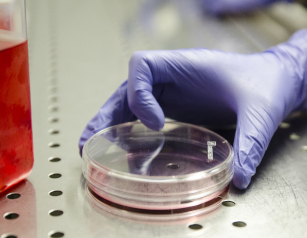
NRRP intervention area: Mission 4 – Education and Research
Component: 2 - From research to business
Investment: 1.3 - Extended partnerships with universities, research centres, businesses and research project funding
Duration: the project will end on 31/10/2025
Total project funding: € 114,500,000
Proposer: Università degli Studi di Pavia
From a human-centred approach to the vision of the system as a whole
The INF-ACT research programme originated from the experience of the SARS-CoV-2 pandemic, which showed how a new infectious agent could have a devastating global impact. The aim of the project is to respond to urgent needs in the field of emerging human infectious diseases. The approach used, called One-Health, considers human health in a broad context, including domestic and wild animals as potential reservoirs of disease and environmental factors that increase the risk of transmission from one species to another. The use of this new methodology is particularly relevant given that most emerging infectious diseases are associated with human-animal-environment contamination.
Project structure and participation
Foundation Composition
Universities and research institutes
- Università degli Studi di Pavia
- Alma Mater Studiorum - Università di Bologna
- Università di Roma La Sapienza
- Università degli Studi di Bari "Aldo Moro"
- Università degli Studi di Cagliari
- Università degli Studi di Milano
- Università degli Studi di Napoli "Federico II"
- Università degli Studi di Padova
- Università degli Studi di Siena
- Università degli Studi di Torino
- Università di Catania
- Istituto Superiore di Sanità
- Consiglio Nazionale delle Ricerche - CNR (National Research Council)
Private actors
- Associazione Istituti Zooprofilattici Sperimentali - AIZS
- Fondazione Bruno Kessler - FBK
- Ospedale Pediatrico Bambino Gesù
- Fondazione Istituto Nazionale di Genetica Molecolare - INGM (National Institute of Molecular Genetics)
- Fondazione Policlinico Universitario Campus Bio-Medico
- Humanitas University - HUNIMED
- Istituto Mediterraneo per i Trapianti e Terapie ad Alta Specializzazione s.r.l. - ISMETT
- Ospedale Sacro Cuore Don Calabria, Casa filiale della Congregazione dei Poveri Servi della Divina Provvidenza
- Università Cattolica del Sacro Cuore
- Università Vita-Salute San Raffaele
- Istituto Ricerche Farmacologiche Mario Negri - IRFMN
- IRBM S.p.A.
Areas of action
- Spoke 1 - Emerging and re-emerging viral threats (leader: Università degli Studi di Pavia)
- Spoke 2 - Arthropod vectors and vector borne pathogens (leader: Università degli Studi di Padova)
- Spoke 3 – Antimicrobial resistance (leader: Università di Catania)
- Spoke 4 - Epidemiology, monitoring and modelling - EPI-MOD (leader: Istituto Superiore di Sanità)
- Spoke 5 - New therapeutic strategies (leader: Consiglio Nazionale delle Ricerche - National Research Council)
The University of Bologna participates in Spoke 1, 2, 3, 4, 5.
Project team
University of Bologna team
Scientific coordinator
Prof. Pierluigi Viale
Teaching and research staff
- Angela Abruzzo
- Alessandro Baldi Antognini
- Mara Battilani
- Maria Laura Bolognesi
- Gastone Castellani
- Elena Catelli
- Giorgio Gallinella
- Maddalena Giannella
- Tiziana Lazzarotto
- Davide Martelli
- Federico Pea
- Luca Prodi
- Marco Rinaldo Oggioni
- Vittorio Sambri
- Sara Tedeschi
- Stefania Varani
- Pierluigi Viale
Staff hired with project funds
Researchers
- Cecilia Maria Bonazzetti
- Alessandra Mistral De Pascali
- Eleonora Diamanti
- Daniele Ghezzi
- Margherita Ortalli
Research fellows
- Sara Cecconi
- Giulia Graziosi
- Hishida Sahoko
PhD students
- Veronica Facile
- Niccolò Guglietta
- Sara Lugli
- Ettore Rocchi
Departments involved
- Department of Chemistry "Giacomo Ciamician" - CHIM
- Department of Biomedical and Neuromotor Sciences - DIBINEM
- Department of Medical and Surgical Sciences - DIMEC
- Department of Veterinary Medical Sciences – DIMEVET
- Department of Pharmacy and Biotechnology - FaBiT
- Department of Statistical Sciences "Paolo Fortunati" – STAT
The work carried out by the university research teams in this project included:
- development of predictive models to identify new infectious threats, with a focus on respiratory and zoonotic viruses
- improving knowledge of the biology and pathogens transmitted by mosquitoes, sandflies and ticks
- creation of a genomic database to understand and prevent antibiotic resistance
- integration of data for early detection of emerging infections and development of alert mechanisms
- researching new targets for broad-spectrum antiviral therapies and development of bioactive materials to counter the spread of viruses
The aim is to create a new national method
The project's holistic and circular approach - from basic research to clinical assessment and back again, from animals to humans and back again, from diagnosis to epidemiology to treatment and back to clinical assessment - will shape the national method by which future communicable diseases are identified.
In the coming months, researchers will continue to explore and develop new strategies to address the challenges of future epidemics. The aim is to further strengthen collaboration between different disciplines and create innovative solutions that can protect the public from emerging health threats.

